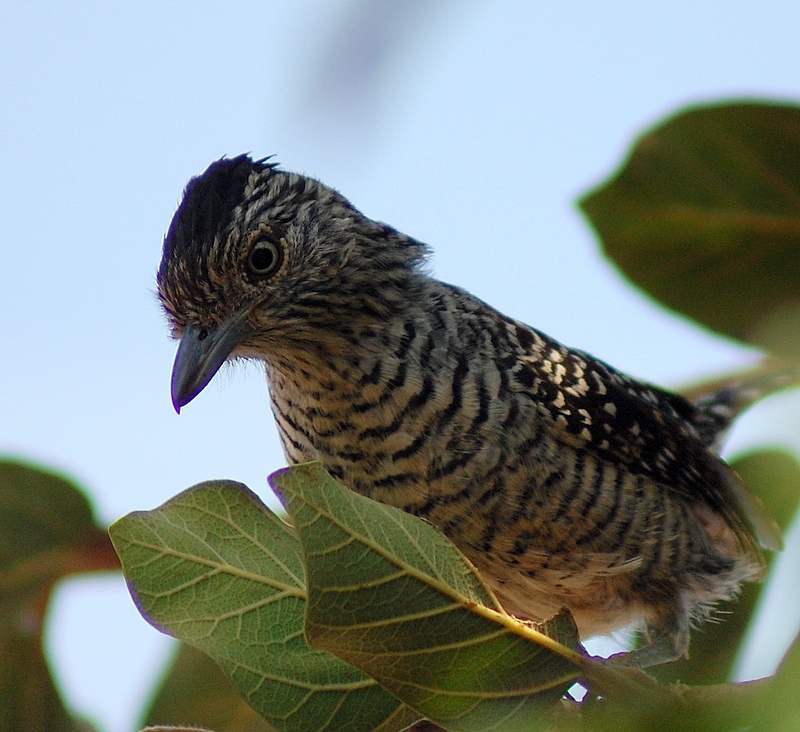|
| 질의: birds of america | 결과: 353번째/1888 | |
Barred Antshrike (Thamnophilus doliatus) - Wiki
| 제목: | Barred Antshrike (Thamnophilus doliatus) - Wiki
| |

| 해상도: 800x732
파일크기: 284806 Bytes
촬영일: 2007:09:30 12:03:58
사진기: NIKON D40 (NIKON CORPORATION)
F number: f/6.3
Exposure: 10/6400 sec
Focal Length: 3000/10
등록시간: 2008:02:01 18:04:11
|
Barred Antshrike
From Wikipedia, the free encyclopedia
Order: Passeriformes
Family: Thamnophilidae
[Photo] Barred Antshrike (Thamnophilus doliatus) in Jaú, São Paulo state, Brazil. Source: Flickr (www.flickr.com/photos/10786455@N00/1471558121/). Date: Taken on September 30, 2007. Author: Dario Sanches (www.flickr.com/photos/10786455@N00/).
The Barred Antshrike, Thamnophilus doliatus, is a passerine bird in the antbird family. It is a resident breeder in the tropical New World in Mexico, Central America, Trinidad and Tobago, and also South America east of the Andes down to northern Argentina, Bolivia and Paraguay.
This is a common bird of thickets, mangroves and gardens, usually found as territorial pairs. The female lays two purple-marked creamy white eggs in a deep cup nest in a shrub, which are incubated by both sexes for 14 days to hatching. The chicks fledge in another 12-13 days.
The Barred Antshrike is typically 16.5 cm long, and weighs 25 g. It has a yellow iris. The male is barred all over with black and white, and has a white-based black crest that is raised in display. The female is rufous above with a chestnut crest. The sides of her head and neck are streaked with black, and the underparts are rich buff.
The Tobagoian race T. d. tobagensis is distinctive; males are whiter below, and females darker, than in the nominate subspecies.
Barred Antshrike is an insectivore which feeds on ants and other arthropods at or near the ground; it sometimes follows columns of army ants, and will take small lizards and berries. It is a skulking species, which may be located by its chuckling hu-hu-hu-hu-hu-hu song, often performed as a duet by a pair of birds, or a growled graaaaa.
http://en.wikipedia.org/wiki/Barred_Antshrike
| The text in this page is based on the copyrighted Wikipedia article shown in above URL. It is used under the GNU Free Documentation License. You may redistribute it, verbatim or modified, providing that you comply with the terms of the GFDL. |
|
^o^
동물그림창고 똑똑전화 누리집
^o^
|
|

